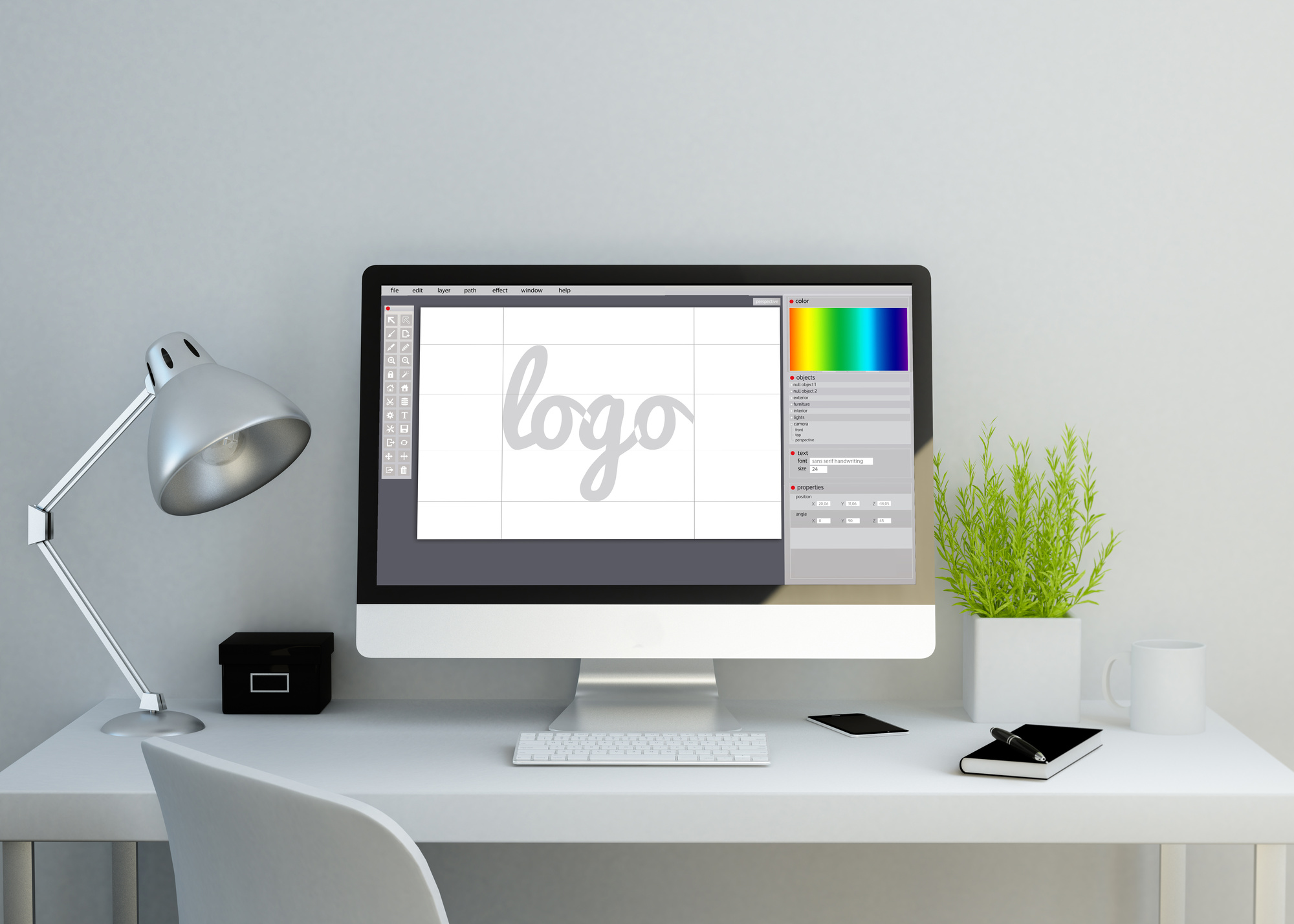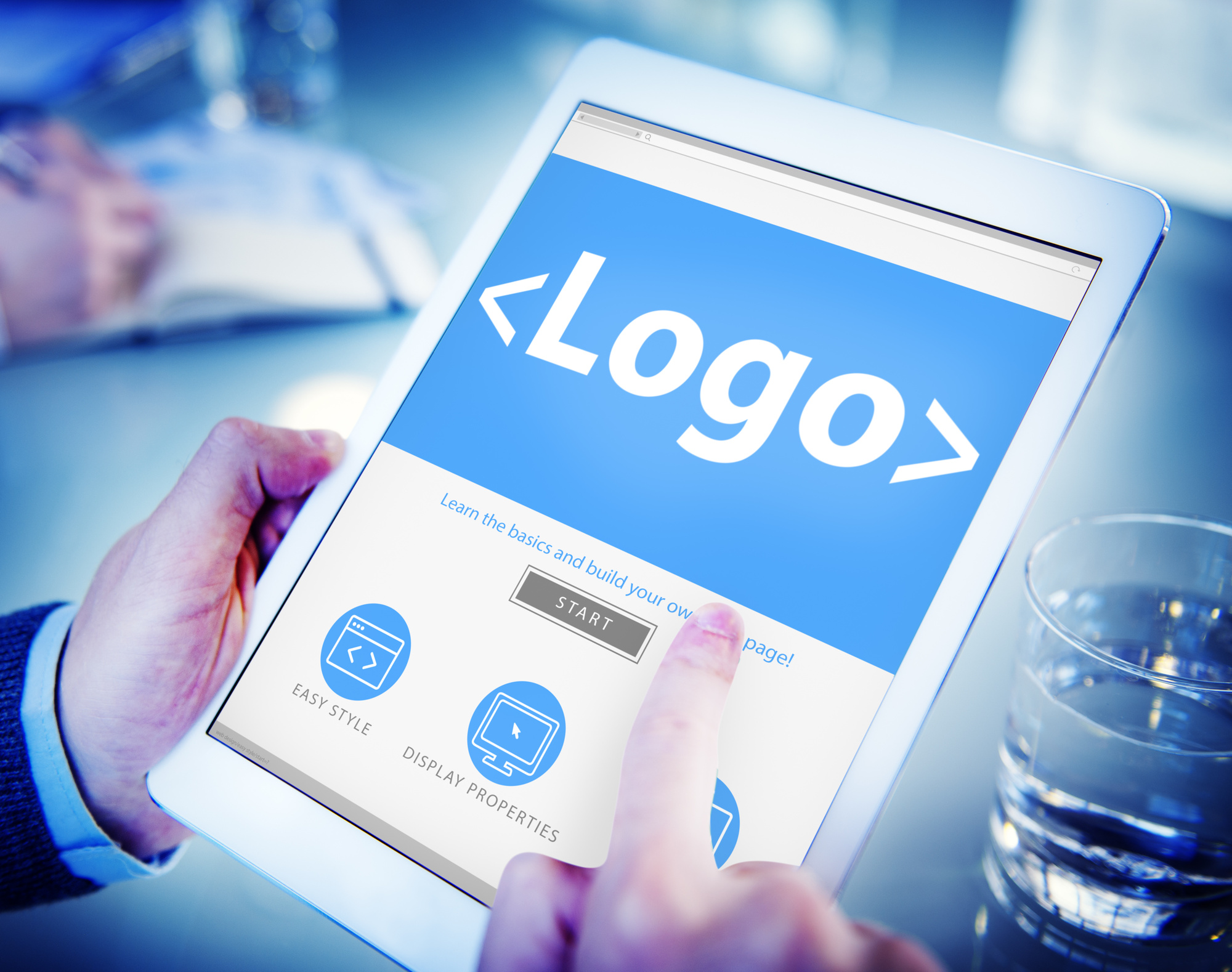Understanding Logo Design Costs and How to Save On Your New Image
Posted on May 18, 2020 by Logo Design Tips and Tricks

Business ownership in the United States has skyrocketed over the last 10 years and now, there are roughly 30.2 million in operation. With all of those businesses comes a lot of logos and other branding elements which is the topic of our post today.
If you’re just starting your company or are looking to give it a refresh, you’ve likely pondered on logo design costs. For those of you that are unsure of what you should pay for a logo or how you can save money on their design, keep reading.
Below, we share some estimates and tips that can help you save big on outstanding logos.
Logo Design Costs
The costs associated with designing a logo will vary. Key elements that will affect cost include the complexity of the logo, whether or not color is used and the rate of your professional.
As a general rage, logo design costs generally go from $150 to $250. At that price, logos should have some handcrafted elements to them as opposed to being fully software generated by logo creation software which we’ll talk more about in a second.
How to Bring Down the Cost of Your Image
If $150 to $250 sounds outside of your range, you do have some options to bring that figure down. Here are three suggestions:
1. Hire a Fresh-Faced Professional
Professional logo designers that are just getting started selling their services may be willing to offer a discount to build their portfolio. Understand that the products you receive from new professionals may not be as high quality as what you’d get from a seasoned pro.
That being said, the savings may be worth the difference.
2. Ask for a Discount From a Seasoned Professional
There’s an adage that says “You never know unless you ask.” With that in mind, feel free to ask a professional you like for a lower price. Depending on what their workload looks like, they may be willing to cut you a deal.
3. Design Your Own Logo
We get that most people reading this post aren’t confident designers. With all of the “make logo online quickly” software that’s available today though, you don’t have to be.
Choose from one of the several logo design suites that you can access from your web browser and give designing your company’s branding a go. Sure, your logo won’t look as unique as if you had a professional designer do it. If money is your primary consideration however, you will save a lot on logo design costs.
Logo Design Costs Fluctuate so Pull Cost-Saving Levers When Needed
The great thing about logo design costs is that, based on your budgetary needs, you can pull levers that will help you save a lot of money. Use the advice we’ve shared to customize your logo design pricing and we think you’ll find that what you end up paying will be more than fair for the product you receive.
Our team wishes you the best of luck on your graphic design journey and welcomes you to check out more of the newest content on our blog for additional tips!
Logo 101: How to Market Logos (The Right Way!)
Posted on May 17, 2020 by Logo Design Tips and Tricks

When it comes to business marketing, the first impression you give matters a lot. Your first impression should be perfect and should be able to capture your style and character. This is exactly how you should market logos.
Your business logo is the visual representation of your business or brand. It is a very powerful tool that you can use to influence how your customers, partners, target, and competitors perceive you. However, if you do not have an audience, your logo will simply be a great graphic design.
To get the best out of your logo’s branding power, you should make sure that your target recognizes it. This means marketing it to the maximum.
Take a look at some of the ways that you can do that:
1. Pre-Launch Marketing
Do not wait to launch your new logo to market it. As you prepare to launch it, generate some bit of buzz about it and get your audience captivated about it. Launching something new takes time, take advantage of this time to hype up your new logo.
Social media offers one of the best platforms that you can use to tell the world that you are about to introduce something new to the market. For example, you can choose to run polls on Instagram or Facebook to ask your audience what they think of your logo.
There are many other ways of transforming your marketing strategy using these platforms.
2. Physical Promotion
Traditional methods of advertising like the use of billboards, banners, flyers, brochures, and more can help market your logo beyond the digital space.
When physically marketing your logo, you should be as creative as possible so that you can grab the attention of your audience. Pick areas that have regular crowds or densely populated to advertise your logo.
3. Write a Blog
Once you launch your logo, you should use content marketing to try to get it out to the public as much as you can. Tell your audience a story about your logo. Write about the history, the decision making process, fun facts, and more.
Your audience will be captivated and will appreciate the effort that you have put on your new creations. Such blog posts speak to the heart and your target will feel emotionally connected to your logo.
Share your post on your social media pages and do not forget to link it back to your website so that you drive traffic and gain visibility.
4. Merchandising
Another way to market your logo is merchandising. This strategy also gives businesses a scope of getting some additional revenue as they reinstate brand loyalty. It is one of the fun ways of marketing your logo.
Make some branded caps, water bottles, pens, T-shirts, mugs, and more and distribute them. You can start with your employees and distributors. Your logo will travel to different places and all you have to do is to give one of your brands to your customers.
When your customers walk with your logo on their hands or use one of your branded products daily, they will connect to it subconsciously and will always feel the need of buying from you and staying loyal to your brand.
Your employees will also feel some sense of pride and loyalty. This will help them represent the company with their best efforts.
5. Industry Affiliations
This marketing strategy does not need a lot of effort but it can provide you with a wide audience. Working together with a company that you share the same customer base with, but are not your competitors, can help you market your logo.
They can display your logo in their events or conferences and help you reach your target. For example, a cleaning company can display the logo of a pest control company during their events, or a car sale company can promote a tire manufacturing company. Such affiliations is a win- win for all companies involved.
Industry affiliations will save you a lot of effort and time because you will not have to create an audience base; you tap into an already existing one. Find a business that you can relate with and are willing to help you as they also benefit from it.
What You Should Know About Branding
To get the best out of your marketing efforts, here are a few things that you should know.
Know Your Audience and Yourself
When creating and designing your logo, you should have your company in mind. You want to use your logo to help you build a relationship with your brand. This should come out clearly on the logo.
Knowing the message or feeling you want your logo to portray and what your audience needs will help you in the design process. This, in the end, will make it easier to market it. Discover what you value, the passion that drives you, and also tailor your logo to appeal to its targets first.
Let Your Design be Impressive
To catch the attention of your audience with that first attempt, you must design your logo to impress. The design should evoke emotion and be unique. This is what will help you market your logo. The design should have a maximum aesthetic appeal.
Take advantage of free logo templates to come up with a captivating layout. Remember, impressive logos don’t necessarily mean animation and graphics. Ensure the logo is readable and engaging.
Note that logos are a very important aspect of the visual identity of a company. They are features on products, ads, storefronts, websites, and more.
They are used to boost sales and are what customers use to differentiate your brand from others.
Use These Strategies to Market Logos
There are several ways that businesses can use to market logos. The best method is to use more than one strategy so that you can reach as many people as possible. You should also consider registering and displaying your logo on some logo design galleries to gain visibility among the more technical audience.
Check out our other articles for more interesting information.
Building Your Blogger Brand: 8 Blog Logo Ideas to Attract Readers
Posted on May 14, 2020 by Logo Design Tips and Tricks

As a blogger, you know the key to success is getting people to read your posts. You want an audience who will become attached to your voice and message.
Your goal, once you have figured out the niche you are going for, is to get readers to know you and your blog. This will happen as they read your work and become engrossed in your material.
You also want to have some branding recognition and you can do that with a blog logo. Read on to learn about these tips for creating blog logos and some potential styles to use as a model for your logo.
Why Do You Need a Blog Logo?
Why is the logo so important for your blog? Isn’t it supposed to be about the writing and the message?
Just ask blogapreneur.com, your blog can turn from you sharing your ideas to a full-blown business. Have your blog go from sharing with a few followers to you becoming an entrepreneur.
One step in that process is branding and one part of branding is a logo.
Your blog logo does several things when readers first come to your blog:
- Creates a first impression and a visual memory of your blog
- Gives your blog an official appearance so you can position yourself as an expert
- Brand identity and recognition
The blog logo allows you to stand out in the niche of blogs like yours so your readers can remember you.
Design Steps for Creating a Logo
Before looking at types of logos, consider the steps you want to go through as you design your blog logo.
First, consider your audience. What do you know about your audience? You want a logo that will resonate with them and form a connection to their interest in you as a writer.
Think about what color palette you want to use for your logo. You want this palette to coordinate or be complementary to colors you already have on your blog and website.
Choose a font. While this can be overwhelming by the sheer number of choices. Work to be consistent with the font choices from your blog and website.
Whether you are making your own logo or having one made, create several versions. See which ones stick with you and catch your eye, so they create a visual memory of your site.
Consider these types of logos when you are planning your design.
1. Brand Mark Logo
Brand mark logos come with a pictorial brand mark used from all branding you do. Think about Apple’s apple or the Nike swoosh.
Often the symbol of the icon represents something from real life, but not always. The advantage of this type of logo is its simple straightforward design.
2. Abstract Logo
An abstract logo is often close to a brand logo. They are usually pretty simple in design. They have an abstract design that doesn’t represent something from real life but becomes associated with the brand.
Imagine Microsoft Windows or Pepsi and you will see an abstract logo.
3. Mascot Logo
Imagine Tony the Tiger on your cereal box and you can see a mascot logo. Mascot logos are friendly and can become known as the brand spokesman for your blog.
The mascot becomes personified as they “speak” and represent your blog, website, and brand.
4. Wordmark Logo
In a wordmark logo, you use only text and color and font to create the logo. The text can be a word, initials, or even a monogram works.
Imagine the sticker on the back of any number of cars that says Uber. If you want a sandwich, you know the green and gold Subway logo with the arrow at the end.
5. Lettermark Logo
While monograms were just mentioned in wordmark logos, lettermarks are similar. They use monograms or abbreviated letters to represent the brand.
A successful lettermark logo often becomes how the business is known instead of by their full name.
You rarely hear someone say they need to ship this overnight via Federal Express. Instead, it’s FedEx.
Likewise, you don’t turn on the TV for breaking news from the Cable News Network. Instead, you see those three letters, CNN, and know you have the news there.
6. Letterform Logo
If you’re a blogger, you might be familiar with the WordPress platform and you’ve seen the letterform logo in action.
Think of the letterform logo as a close family member of the wordmark logo. Instead of several letters, as you might see in a monogram, the letterform logo comes with one letter.
Again, think of WordPress and their W. Also, imagine Yahoo and their Y or McDonalds and the golden arch M.
7. Combination Logo
As the name implies, the combination logo will show both words or letters and some type of graphic.
Taco Bell celebrates its name in brand purple then adds the signature bell in pink above it.
The CVS logo is all in one color with its letters in bright red and the CVS heart as part of the logo design.
8. Emblem Logo
Starbucks and Stella Artois have both gained brand recognition through the use of an emblem logo.
Imagine the emblem logo like a family crest except instead of representing your family, it represents the blog.
Build Your Blog With a Great Blog Logo
You are ready to take your blog to the next level and garner the attention it deserves. Make sure you do it with a blog logo that can represent you and your message.
For more great design ideas, be sure to visit our page again soon and browse the rest of our content.
3 Simple Ways to Digitally Edit a Logo
Posted on May 09, 2020 by Logo Design Tips and Tricks

What do you think of when you hear the words Nike, Apple, and Coke? Besides the fact that they are major brands, they all have something else in common—unforgettable logos! Have you ever wondered how to edit a logo for your business?
Now more than ever it is important to have a logo that markets your brand. Think about the logos of Nike, Apple, and Coke. They are simple designs, but they are synonymous with their brands. An apple, a swoosh, and a circle are all they needed to make their brand stand out.
How to Edit a Logo
Here are three ways how to edit your logo to help make it as unforgettable as the major brands mentioned above.
Change the Color Scheme
If you think the color scheme doesn’t matter, ask Coke how they would do if their logo used colors like black and yellow. It sounds strange, doesn’t it?
Chances are Coca-Cola had gone through different color schemes along the way. Finally, they decided on their simple red circle with white text. Consider this fact: color improves brand recognition by up to 80%. Color is important.
Could your logo use a color makeover? When editing your logo you may want to ask yourself a few questions.
Is My Logo Too Busy
Many times, people think an intricate logo will make a difference with an abundance of colors. Nike, Apple, and Coke use minimal designs and colors with great effect.
Do the Colors Speak to My Audience
Nike has simple colors and font that is black. Apple started with a rainbow apple logo, then black, then silver. With each design, they went more minimal. Coke went with simple red and white that pops. What colors will speak for your brand?
Sometimes modifying your logo to be more minimalistic in design really helps it stand out boldly against its competitors. How can you change your logo with a color makeover?
Think About the Text
Coca-Cola is a great example of what having the right text can do for your logo. Coke is so ingrained in us with its font that it doesn’t even need the red circle. Think about Nike, the same thing. These brands figured out that text is just as important as anything else when it comes to a bold logo.
A great way to edit a logo is simply to play with the fonts to see what catches your eye. By playing with bold, italicized, and simple text will help you make a decision.
Format Your Logo for Different Sizes
Let’s go back to Nike, Apple, and Coke. Each brand has different logo sizes. Your business should be no different. Once you have edited your logo the way you like it, use an image enlarger to create different sized logos for your brand.
Communicating your brand takes many different paths. It can exist on a billboard or a mug. Each should stand out. Use an image enlarger that won’t change the quality of your logo design.
Time to Get to Work
Now you know how to edit a logo for your business. Just like Nike, Apple, and Coke, your logo creates a lasting impression on your customer. It provides an anchor to your brand. So get out there and be bold.
Keep exploring our site for more helpful tips like this.








